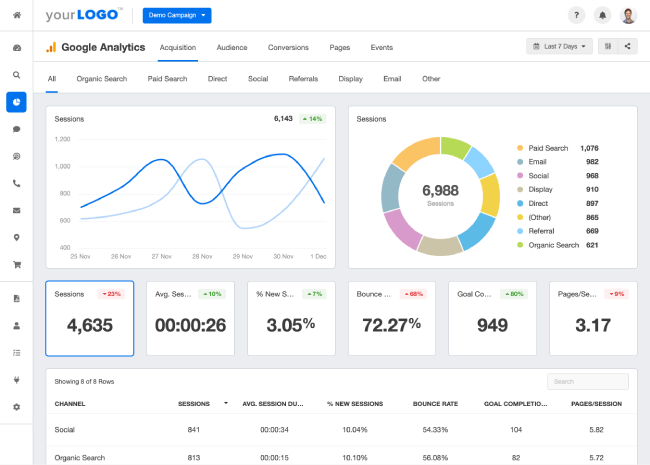Campaign measurement plays a role in helping businesses determine the success or failure of a campaign. This is how you can reflect on your campaign and start planning your next campaign. Metrics will help you prove the effectiveness of your campaign. The following article will provide general information about campaign measurement as well as common metrics you need to measure.
Campaign measurement is the process of measuring the effectiveness of a business’s marketing campaign. The measurement process will help businesses evaluate the final results that the campaign brings compared to the initial goals, thereby drawing experience to improve future campaigns. You can measure campaign performance using a number of KPIs and software tools that allow you to compare results with your campaign goals.

What is campaign measurement?

The role of measurement planning
First of all, marketers should choose the right goals to pursue. Marketing goals must correspond to the strategy chosen by the company, the market situation, seasonal customer activity, and product cycle stage. For example, getting as many reviews as possible might be a good goal for a new product and a bad goal if a company is already established and well-known.
There are 5 key metrics of sales and communications effectiveness that every marketer should measure:
Total clicks: shows how many users visited your website during your marketing campaign.
Click-through rate (CTR) is a basic marketing metric you can get by dividing all your ad views by the number of clicks on that ad.
New leads generated: the number of new customers a business acquired during the campaign.
Website traffic to leads ratio: shows how many website visitors became customers or leads. To calculate this metric, use the formula: all website visits / number of new buyers.
Customer acquisition cost (CAC) shows how much money a business spends to acquire a new customer. You can track this metric for each channel and compare to find the best performing channel. To calculate CAC, you need to divide all customer acquisition costs by the number of new customers.
Additionally, you can find Total Clicks and Average Time on Page metrics using Google Analytics.

Google Analytics
Some projects may rely solely on engagement metrics. For example, media calculate the number of users they attract and typically only sell their services to businesses. If content is an important aspect of your business, you should track engagement metrics like social media, website, and page performance.
5 engagement metrics you might find useful:
Tracking these metrics, you’ll have your finger on the pulse of your Brand and will be able to predict results and adjust your marketing content going forward.
High CTR and positive responses to your offer provide information about the strength of your marketing campaign. However, the response to your offer is also tied to the product’s features and its price. Even though the CTA may not be effective for your offer, users may still click on the ad, and the product features may be the reason for the high CTR. If a user clicks on an ad but the landing page’s conversion rate is low, the product may not meet the visitor’s expectations.
How do you identify your area of weakness? The best technique is to compare the outcomes of several campaigns while only changing the CTA or product description during testing. What distinguishes a successful client response to your campaign from virality? Customers may not want to purchase every product they share. On the Internet, a brilliant advertisement can be shared hundreds of times, but this does not increase Brand awareness or sales.
That’s why defining your marketing goals is so important. These goals can be a certain number of leads or increasing customer lifetime value (LTV).

Review and analyze data
The topic of “What worked in your campaign and what didn’t?” will be addressed through campaign measurement. With measured results, you may identify issues from less effective efforts to prevent repeating them and adapt your strategy based on lessons learned from effective ads. And that will serve as your starting point for future marketing strategies that are successful.

